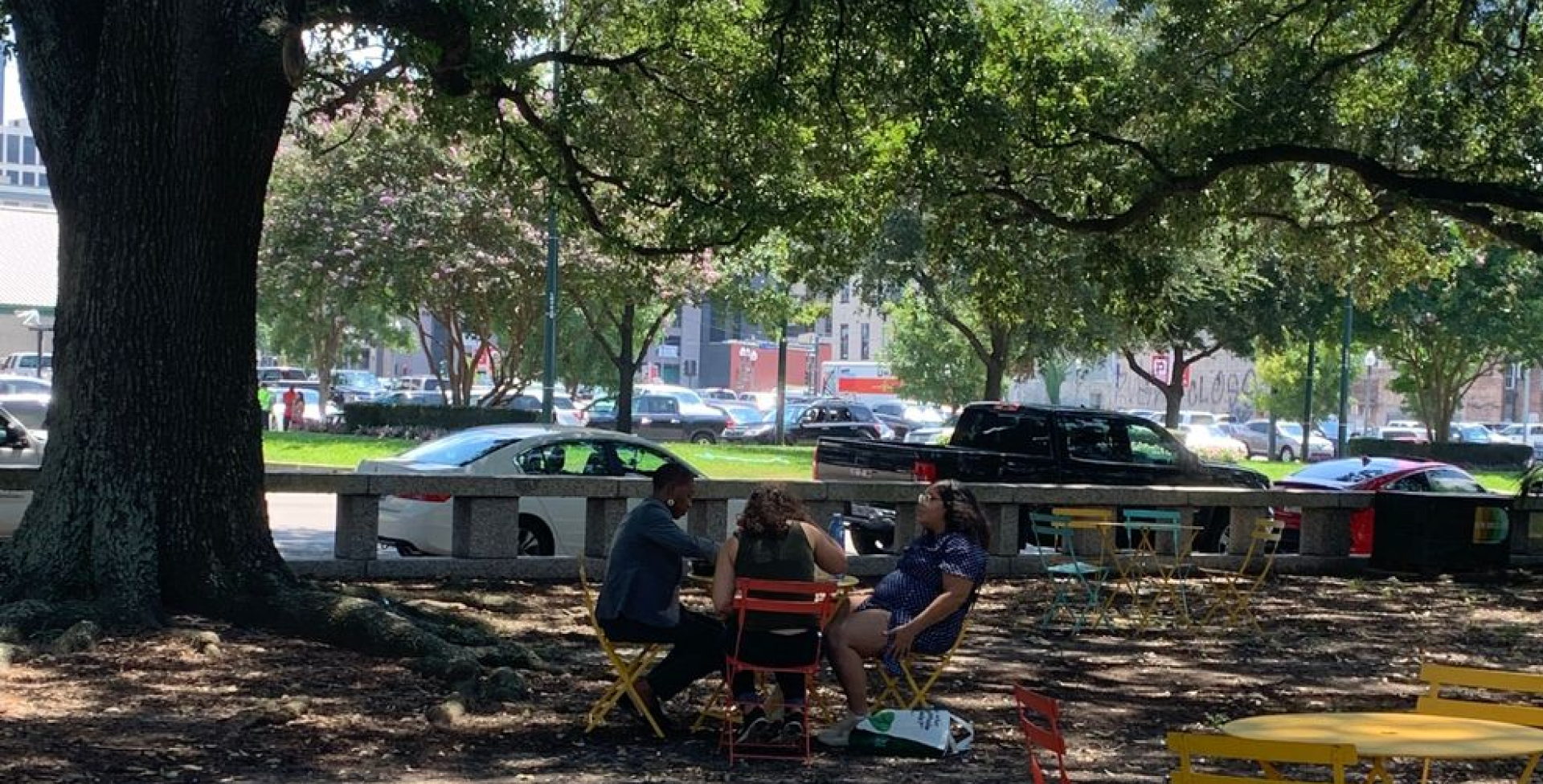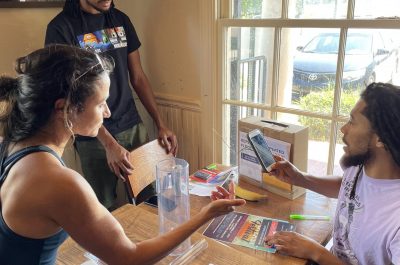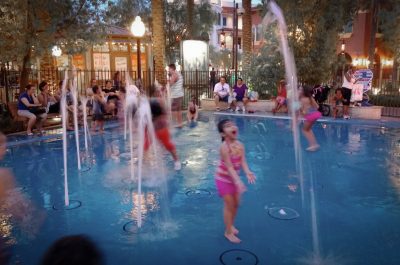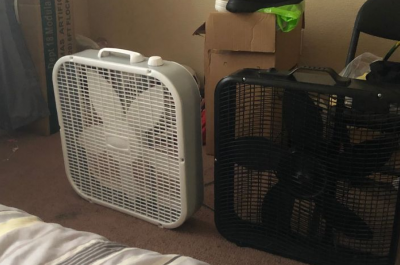New Orleans, Louisiana— Starting this month, ISeeChange, the New Orleans Health Department, CAPA Strategies, and NOAA are teaming up to collect stories, create dialogue, and map extreme heat with sensors in our city.
This summer, the COVID-19 pandemic is restricting access to cool public spaces like libraries and pools. The pandemic has exacerbated the growing problem of extreme heat in Louisiana. As the climate changes, New Orleans has already become one of five large U.S. cities where trends exceed the national average for all aspects of heat waves. As a result, heat-related deaths are projected to rise in the city.
There are many ways to reduce heat across the city. But the first step is a better understanding of where, when, and how residents experience the impacts.
“We’re mounting sensors on cars, utility poles, in local parks, and in partnership with local organizations to measure urban heat at a block by block level,” said Julia Kumari Drapkin, CEO of ISeeChange, a global online platform that collects community stories and microdata to inform climate change adaptation and infrastructure design. “But data without context is meaningless. We’re looking to community members across New Orleans to help us understand how heat impacts their daily lives, especially now with COVID- 19 amplifying our health risks.”
Mapping heat impacts across the city
An essential part of this project is creating a map of hot spots with an emphasis on equity. These maps will be created by residents who will measure temperatures in tens of thousands of locations throughout a city using CAPA’s car mapping heat sensors. The project team will engage residents on the ISeeChange mobile app and website about the impacts of heat. Additional sensors will be deployed to participants to help get temperature and humidity data.
“We are creating a research collective that allows our partnerships to effectively understand and mitigate the impacts of extreme heat and the challenges it poses to our city’s residents. The importance of the microdata collected during this initiative is how tangible solutions can be created to assist with the threats to human health, sustain energy resources and other alternative materials for urban infrastructures that can help reduce the effects of urban heat, “ said Dr. Jennifer Avegno, Director of New Orleans Department of Health.
Posting on ISeeChange is free and easy, so there is no barrier to participation in this project. It is important to the project team that we gather stories from residents with a variety of life experiences.
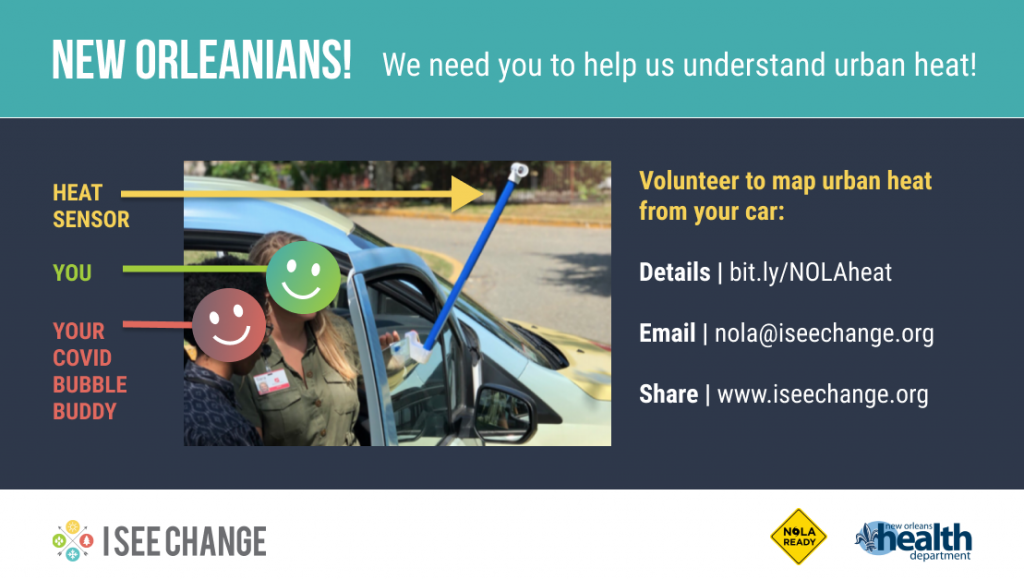
What we know about heat in New Orleans so far
Data from existing ISeeChange sensors revealed urban-heat challenges as well as potential for solutions. Temperature data collected at the airport in Kenner and used in heat alerts across the city is not reflective of neighborhood-level experiences. On average, ISeeChange heat sensors were 6-10 degrees different from the temperature recorded at the airport with peak heat coming around 2-3pm.
“We do know that heat can be a significant issue and we are looking forward to engaging the community more on this topic and seeing how we might be able to improve our forecasts and our messaging,” Danielle Manning, a forecaster at the National Weather Service’s New Orleans/Baton Rouge office said. “We verify the forecasts based on specific observations, so we use the airport in Kenner and the airport at Lakefront, and having the higher density of observations to see how temperatures vary across the city is going to be really interesting for us and very helpful as well.”
Data from the stationary sensors also revealed the role of wind in keeping neighborhoods cool. Wind may be potentially even more important than shade in cooling, particularly at night. Sensor data validates the need to plant trees for cooling projects, but those projects should prioritize trees that maximize air flow.
Get involved
We are looking for pairs of volunteers to help us map heat. Pairs will drive (or bike if you’re so inclined!) along select routes in New Orleans on the weekend of July 25th and 26th, hot weather permitting.
- Sign up for ISeeChange and start posting today.
- Email nola@iseechange.org to learn how to volunteer to be a CAPA heat mapping driver
Contact
Scott Eustis | New Orleans Community Manager, ISeeChange, scott@iseechange.org
Julia Kumari Drapkin | CEO and Founder, ISeeChange, julia@iseechange.org
Juliette Frazier | Environmental Health Coordinator, City of New Orleans Health Department, jefrazier@nola.gov

